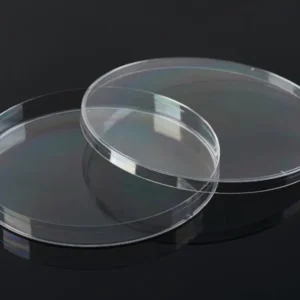Bacterial culture refers to the process of growing bacteria in a controlled environment, typically in a laboratory. Bacterial culture is an essential tool in microbiology and allows scientists to study the behavior, physiology and properties of different types of bacteria.
A Petri dish is a shallow cylindrical dish that is used to culture microorganisms, particularly bacteria. It is made of glass or plastic, and has a lid that is used to seal the dish and create a controlled environment for the bacteria to grow.
An inoculating loop is a small, thin wire that is used to transfer bacteria from one source, such as a bacterial culture, to another, such as a Petri dish. The loop is sterilized by flaming it in a Bunsen burner before and after each use to avoid contamination. This technique is called streaking, where a small amount of bacteria is transferred to the surface of the agar medium and is spread over the surface to create isolated colonies.
A bacterial spreader, also known as a streaker, is a laboratory tool used to spread bacteria over the surface of a growth medium in a Petri dish. It is typically a flat metal rod or a glass rod with a flattened end that is used to evenly distribute bacteria over the surface of the agar. This allows for the growth of isolated colonies of bacteria. The spreader is also sterilized by flaming before and after use to avoid contamination.
A bacterial needle, is a thin sharpened metal wire, with a loop at the end. It is used to pick up small amount of bacteria from the culture and transfer it to a new medium. It can also be used to transfer bacteria from one Petri dish to another. Like the inoculating loop, the needle is sterilized by flaming before and after use to avoid contamination.
Showing all 3 results



